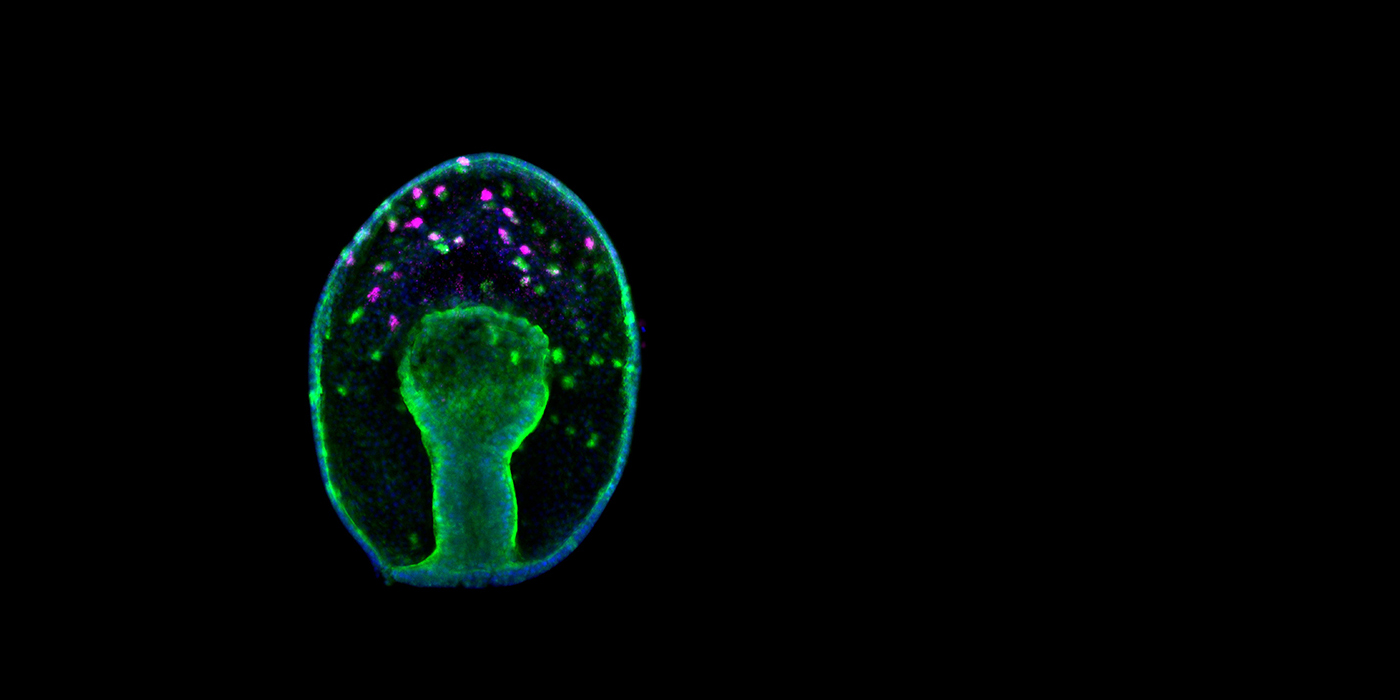How to Build and Evolve a Nervous System

How neural stem cells generate the correct number and type of differentiated neurons in appropriate places is an important question in developmental biology.
In a new paper, titled "A gene regulatory network for apical organ neurogenesis and its spatial control in sea star embryos," two Ph.D. alumni from the Hinman lab, Alys Cheatle Jarvela and Kristen Yankura, and Veronica Hinman, associate professor of biological sciences, explains how spatial patterning in the ectoderm controls progression of neurogenesis in addition to providing spatial cues for proper neuron location.
It has been known for some time that many animals, including the sea star larva share remarkably conserved gene expression patterns along the anterior-posterior (AP) axis. Genes with roles in patterning the anterior-most nervous system in vertebrates, for example, are also expressed in the most anterior regions of the seat star larva.
Similarly, genes involved in patterning more posterior regions of the vertebrate brain are expressed at the posterior boundary of the ectoderm of the sea star. The function of these domains has remained a puzzle however as the sea star larva, like its marine invertebrate relatives, has a very simple nervous system with no obvious regionalization as found in more complex animals, and therefore, no clear need for much patterning.
This new work, published on the cover of the upcoming November 15th issue of Development, now shows that these AP domains function to directly control neurogenesis.
Neural precursor cells (green in the above image) divide symmetrically in the posterior zone, divide asymmetrically to produce a more restricted serotonergic neural sister (pink in the above image) in the intermediate zone, and exit proliferation to become a differentiated serotonergic neuron in only the anterior-most zone. This suggests that the ancestral function of these highly conserved domains may have been to directly control the formation of neural types and the numbers of these neurons.